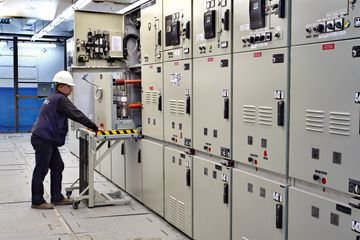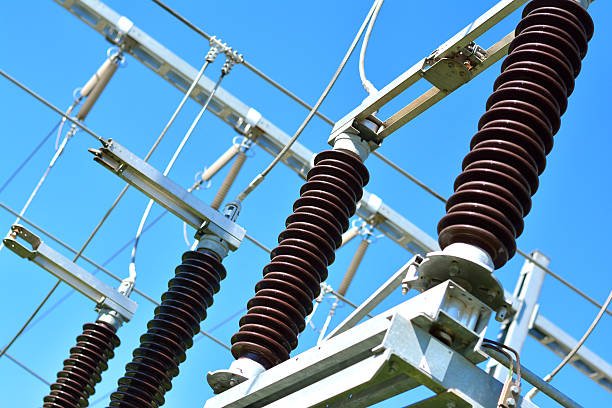The power frequency withstand voltage method is a commonly employed technique for assessing the degradation of vacuum levels within vacuum tubes in vacuum circuit breakers. This method primarily serves as an indicator of severe deterioration within the vacuum degree. When the vacuum degree reaches a range of 10^-2 to 10^-1 Pa, even if the breakdown voltage remains unaltered, the performance of the arc extinguishing chamber is compromised.
Vacuum switch vacuum degree tester utilizes an innovative excitation coil and employs the magnetron discharge method to evaluate the vacuum degree of the arc extinguishing chamber without requiring disassembly. Simultaneously, it utilizes a microcomputer for synchronous control and data acquisition and processing, thereby achieving a field test sensitivity for the vacuum degree of the arc extinguishing chamber down to 10^-5 Pa.

The most notable feature of this instrument is its capacity to measure vacuum levels without necessitating disassembly. It offers the advantages of user-friendliness, straightforward operation, non-disruptive measurement, and high testing precision. Consequently, it is a practical testing instrument extensively employed across various sectors, including power generation, steel manufacturing, petrochemicals, textiles, coal mining, railways, and other industries that utilize vacuum switches.manufacturing, petrochemicals, textiles, coal mining, railways, and other industries
What is the principle of Vacuum switch vacuum degree tester?
The principle underlying the vacuum switch vacuum tester involves several key steps. First, the two contacts of the arc extinguishing chamber are separated to a specific distance. Then, a pulse of high voltage is applied, and either a solenoid coil is positioned around the arc extinguishing chamber or a new π-type coil is placed outside of it. Subsequently, a substantial current is passed through the coil to generate a synchronized pulse magnetic field within the arc extinguishing chamber, aligned with the high voltage.
Through this process, a powerful pulsed magnetic field and electric field act on the ions within the arc extinguishing chamber, causing them to undergo helical motion and collide with residual gas molecules, resulting in ionization. The ion current generated is approximately proportional to the density or vacuum level of the residual gas within the chamber.
Different vacuum tube models, owing to their varying structures, exhibit differences in ion current magnitude under identical contact distance, vacuum level, electric field, and magnetic field conditions. Experimental data is used to establish calibration curves that correlate vacuum level with ion current for different tube types.
When conventional magnetic discharge methods are employed to measure the vacuum level of the arc extinguishing chamber, improving testing sensitivity necessitates removing the chamber from the circuit breaker and placing it within a solenoid coil. However, with the use of the new π-type coil, it becomes possible to encompass the arc extinguishing chamber from the side, eliminating the need for disassembly. Additionally, an 80C196 microcontroller is employed for synchronized control and data acquisition processing, thereby enhancing on-site testing sensitivity for the vacuum level of the arc extinguishing chamber.
The importance of vacuum circuit breakers
Maintenance and Reliability: Vacuum circuit breakers are essential components in electrical systems, and their reliability is paramount. Vacuum switch vacuum degree testers help in determining the condition of the vacuum within these breakers. Regular testing allows for preventive maintenance, reducing the risk of unexpected failures and downtime.
Safety: Vacuum switches are often employed in high-voltage applications. Ensuring that their vacuum degrees are within specified limits is crucial for safe and reliable operation. Testers help identify potential issues before they compromise safety.
Performance Assurance: The performance of vacuum switches is directly linked to the quality of the vacuum within the arc extinguishing chamber. Maintaining the desired vacuum level is essential for efficient arc extinguishing, which, in turn, ensures the proper interruption of electrical currents during fault conditions.
Efficiency: Vacuum switch vacuum degree testers provide a means to measure the vacuum degree without the need for disassembly. This efficiency in testing reduces downtime and labor costs associated with maintenance.
Data-Driven Decision-Making: These testers employ advanced technology, such as microcontrollers and calibration curves, to provide accurate measurements. The data acquired allows engineers and technicians to make informed decisions regarding the condition and maintenance of vacuum switches.
Versatility: Vacuum degree testers are adaptable to different vacuum tube models and are capable of measuring a wide range of vacuum levels. This versatility makes them suitable for a variety of applications and industries.
In conclusion, vacuum switch vacuum degree testers are indispensable tools for ensuring the reliability, safety, and performance of vacuum switches in critical applications. They empower industries to proactively maintain their electrical systems, reduce downtime, and make data-driven decisions to optimize operations
The importance in the different industry of power generation, steel manufacturing, petrochemicals, textiles, coal mining, and railways
Vacuum switch vacuum degree testers play a crucial role in various industries, including power generation, steel manufacturing, petrochemicals, textiles, coal mining, and railways, where vacuum switches are widely used. These testers are instrumental in assessing the vacuum degree within vacuum tubes, particularly within the arc extinguishing chambers of vacuum circuit breakers. Here’s an analysis of their significance:manufacturing, petrochemicals, textiles, coal mining, and railways, where vacuum switches are widely used.
Manufacturing Industry:
Importance: The manufacturing sector relies heavily on electrical equipment and machinery, often operating at high voltages. Vacuum switches are commonly used in manufacturing facilities for efficient circuit interruption. Ensuring the proper functioning of these switches through vacuum degree testing is critical to prevent unexpected shutdowns and maintain production efficiency. manufacturing sector relies heavily on electrical equipment and machinery, often operating at high voltages. Vacuum switches are commonly used in manufacturing facilities for efficient circuit interruption. Ensuring the proper functioning of these switches through vacuum degree testing is critical to prevent unexpected shutdowns and manufacturing sector relies heavily on electrical equipment and machinery, often operating at high voltages. Vacuum switches are commonly used in manufacturing facilities for efficient circuit interruption. Ensuring the proper functioning of these switches through vacuum degree testing manufacturing sector relies heavily on electrical equipment and machinery, often operating at high voltages. Vacuum switches are commonly used in manufacturing facilities for efficient manufacturing sector relies heavily on electrical equipment and machinery, often operating at
Petrochemical Industry:
Importance: Petrochemical plants involve complex processes, often in hazardous environments. Vacuum switches are used in electrical systems for safety and process control. Accurate vacuum degree testing is crucial to safeguard personnel and assets by preventing electrical failures that could lead to dangerous situations or costly production interruptions.
Textiles Industry:
Importance: Textile manufacturing facilities rely on a variety of electrical equipment to automate processes and control machinery. Vacuum switches are employed in these systems for protection and control. Regular vacuum degree testing ensures the uninterrupted operation of critical textile machinery, minimizing downtime and maintaining production schedules. manufacturing facilities rely on a variety of electrical equipment to automate processes and control machinery. Vacuum switches are employed in these systems
Coal Mining Industry:
Importance: Coal mining operations often take place in challenging and remote environments. Electrical systems in mines are essential for lighting, ventilation, and machinery control. Vacuum switches are used in these systems to ensure safety and productivity. Reliable vacuum degree testing is vital for preventing electrical failures underground, which could have life-threatening consequences and disrupt mining operations.
Railways Industry:
Importance: Railways rely on an extensive network of electrical systems for signaling, communication, and traction control. Vacuum switches are employed in railway infrastructure to ensure the smooth and safe operation of trains. Vacuum degree testing helps maintain the integrity of these systems, reducing the risk of signal failures, train delays, and accidents.
In all these industries, vacuum switch vacuum degree testers play a crucial role in ensuring the reliability and safety of electrical systems. By detecting potential issues in vacuum switches early, these testers contribute to the uninterrupted operation of critical equipment, reduce downtime, enhance safety, and ultimately save costs. Therefore, they are indispensable tools for maintaining the functionality of electrical systems in the






